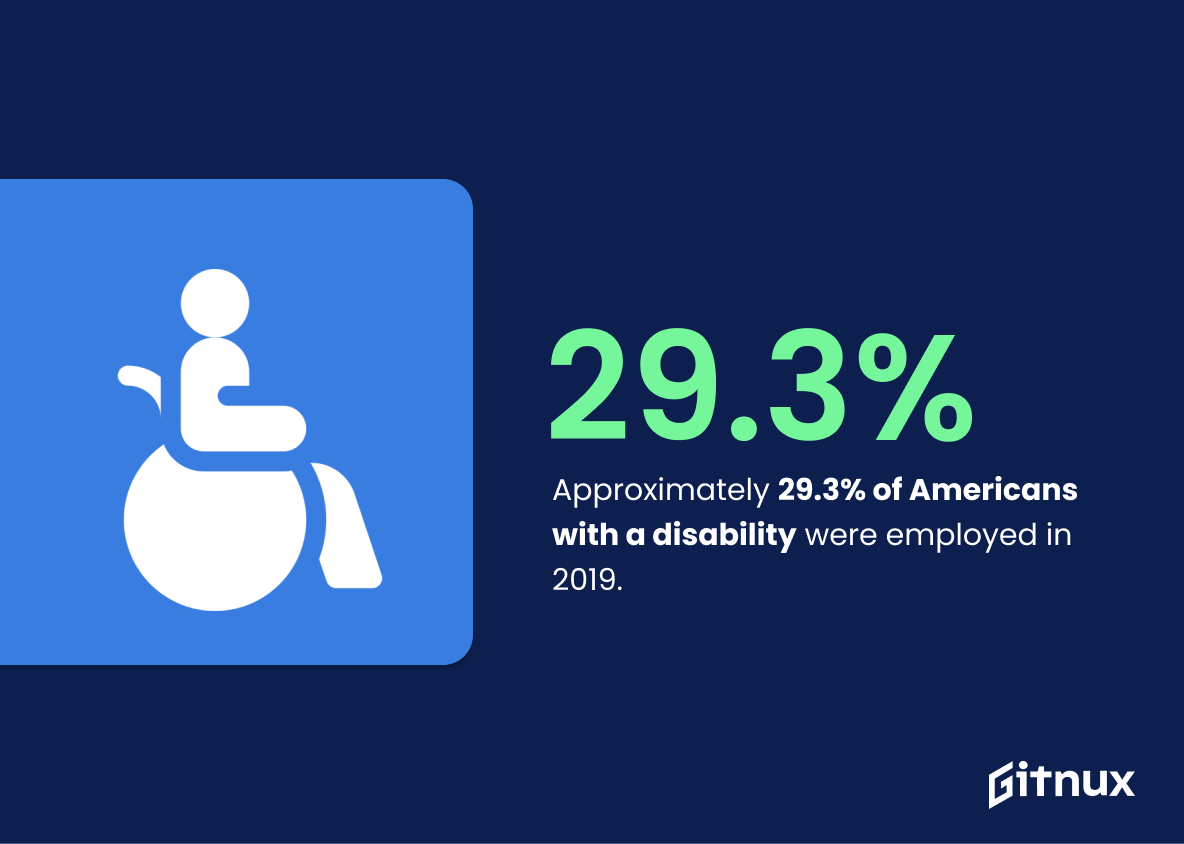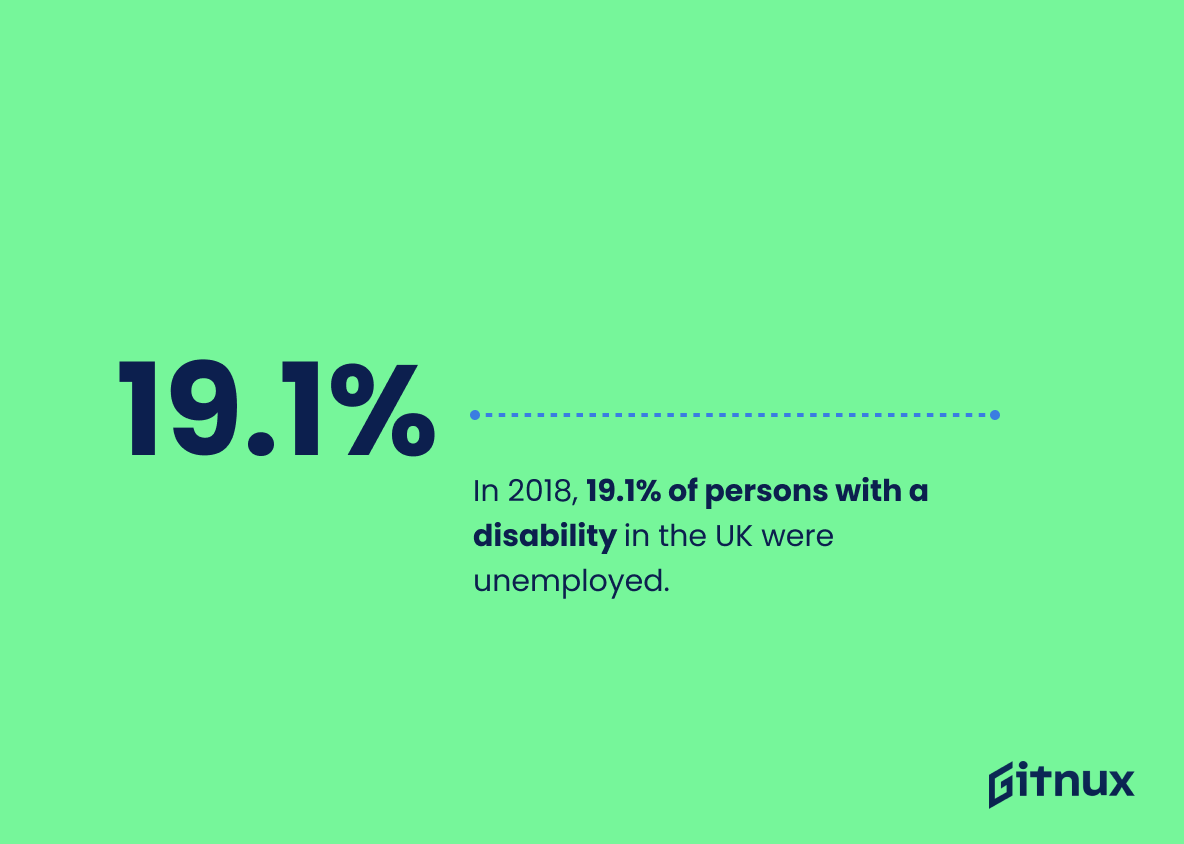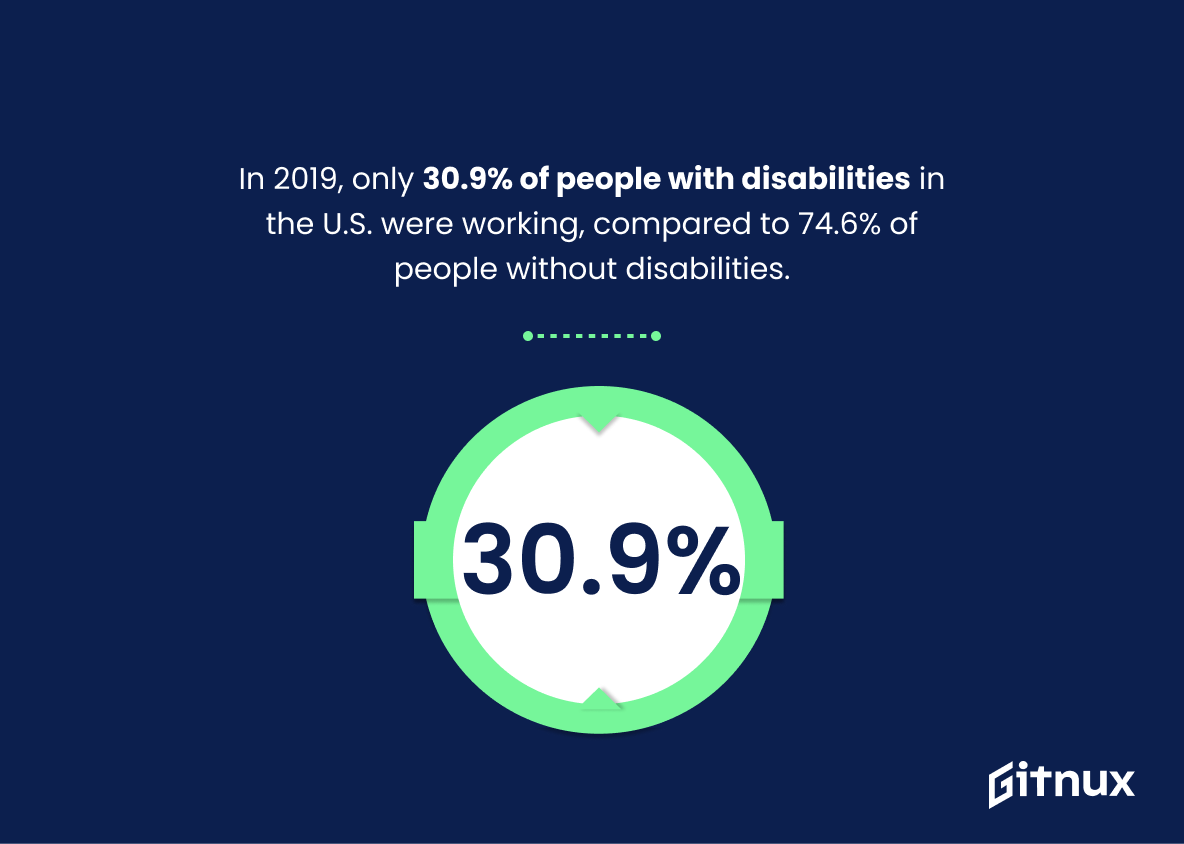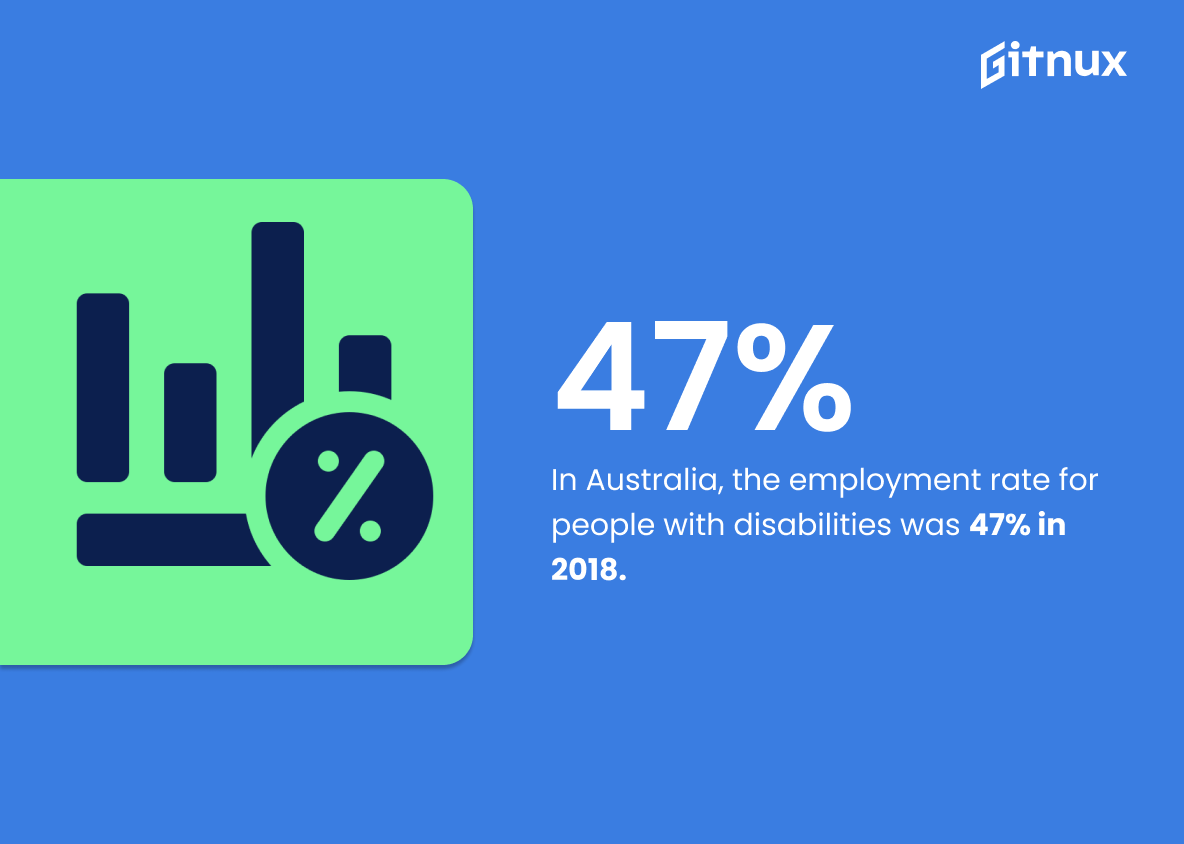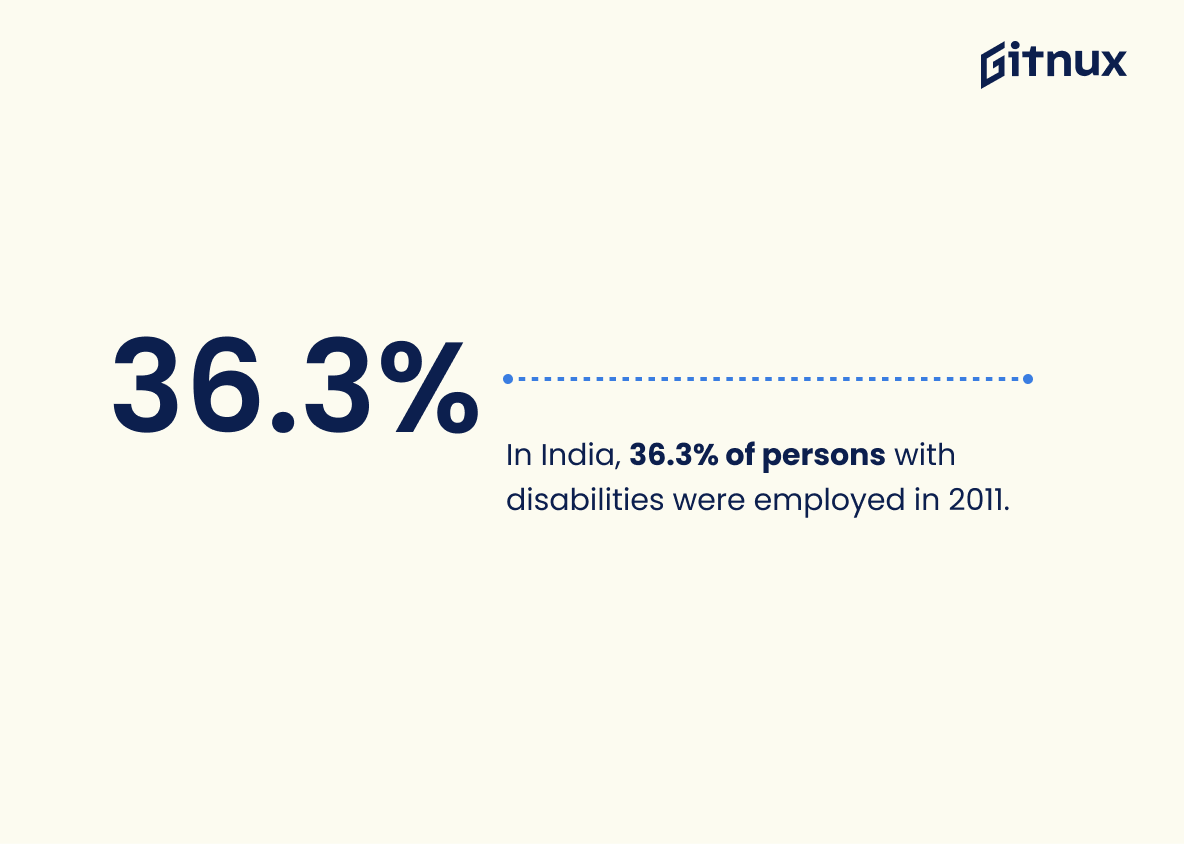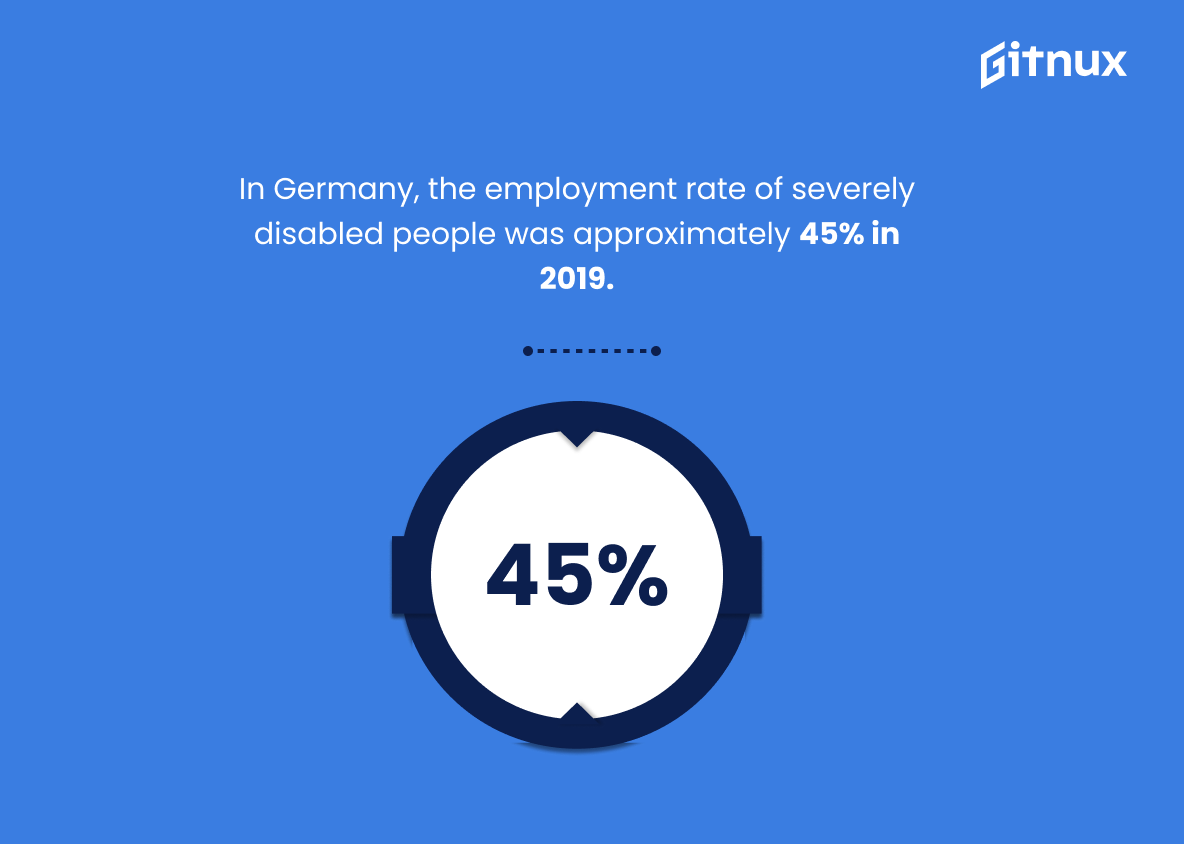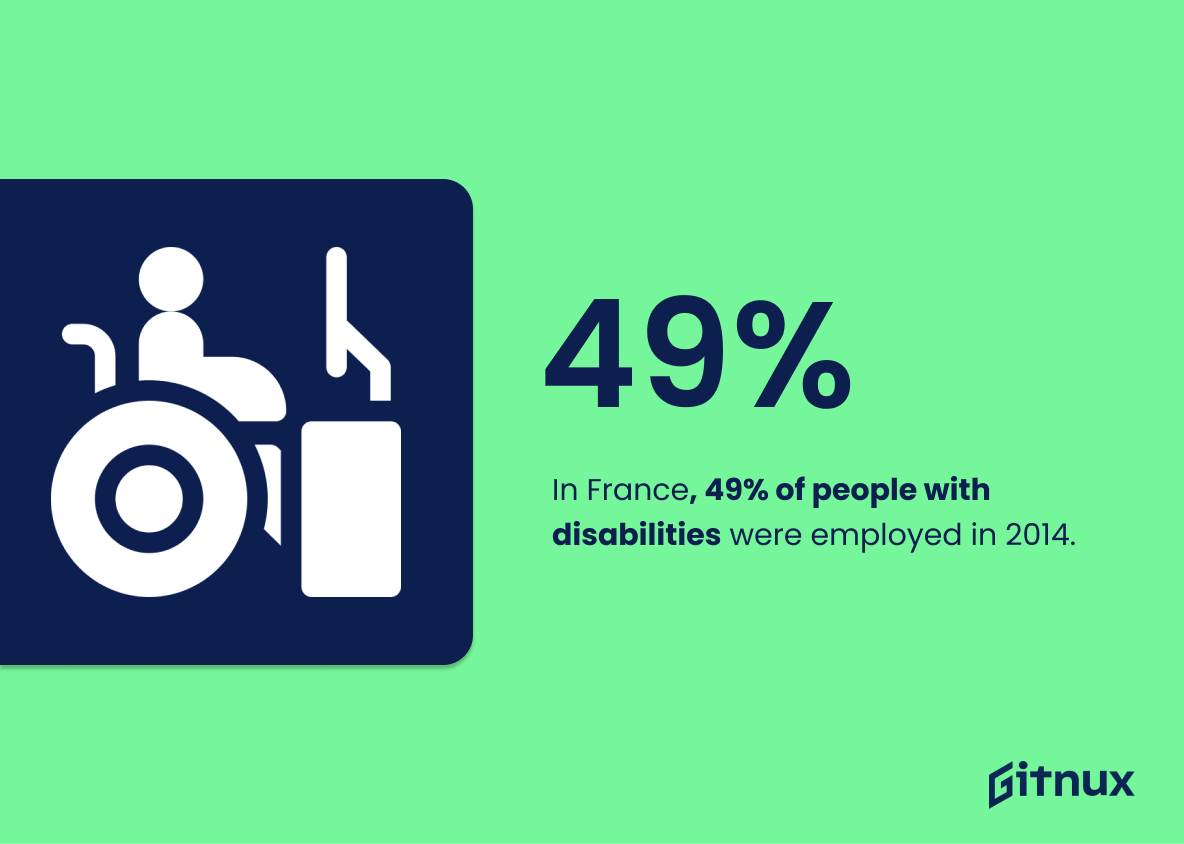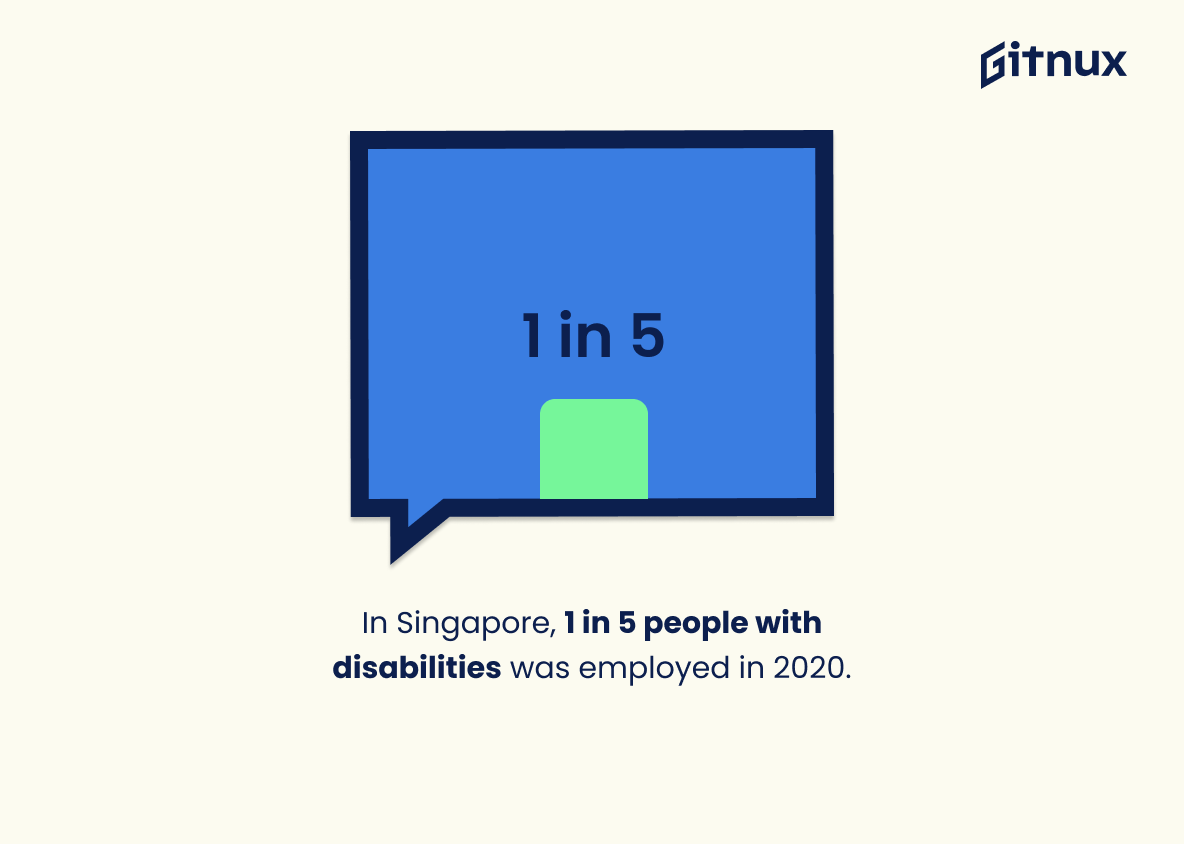The discourse surrounding inclusivity and diversity in the workforce has brought several critical topics to the forefront. Among them is the issue of employment for individuals with disabilities – a subject that doesn’t receive as much attention as it rightfully deserves. This blog post delves into the realm of disabled employment statistics, providing a comprehensive analysis of trends, challenges, and triumphs that have shaped this landscape over the years. It seeks to shed light on the progress made, while also underscoring the steep road ahead towards achieving parity. The aim is to provide a clearer perspective, stimulate informed discussions, and incentivize actions geared towards creating an equitable employment environment for all.
The Latest Disabled Employment Statistics Unveiled
Approximately 29.3% of Americans with a disability were employed in 2019.
Illuminating the path treked by Americans living with a disability, the fact that in 2019, approximately 29.3% of them were employed offers testament to their ability in overcoming barriers and contributing productively to the economy. It’s a reflection of their resilience, determination, and ability to challenge stereotypes in the world of work. This numerical insight also holds a mirror to society, policy makers, and businesses—revealing our collective progress, as well as the expanses yet to cover, in wholly integrating our fellow citizens with disabilities into the heartbeat of our economic life. It’s more than just a number—it is a spark for dialogue, reflection, and action in the arena of disabled employment.
The employment-population ratio for persons without a disability was 66.3% in 2019.
To add some perspective, let’s delve into the significance of the aforementioned statistic which states that in 2019, the employment-population ratio for persons without a disability was 66.3%. Now, as we walk through the universe of disabled employment statistics, this figure serves a beacon, lighting up the discrepancies that exist in employment opportunities for individuals based on their disability status.
As the readers traverse the labyrinth of this blog post, this benchmark gives them a reference point, acting as a mirror reflection of the contrasting reality faced by persons without disabilities. A staggering 66.3% enjoy employment, throwing into sharp relief the proportion of their disabled counterparts who have access to similar job opportunities. This statistic is a window that offers a view into the inequalities pervading the job market, which is imperative when having discussions centered around disabled employment statistics. It shines a spotlight on the gap that needs to be bridged and actions that need to be taken. Without such comparative figures, the narrative would certainly lack the same depth and resonance.
In 2018, 19.1% of persons with a disability in the UK were unemployed.
Illuminating the state of affairs, the figure in context – a stark 19.1% of persons with a disability unemployed in the UK in 2018 – gives life to the narrative of the blog post about Disabled Employment Statistics. This number not only encapsulates the challenging reality faced by this demographic, but it also paints a compelling picture of the landscape of employment opportunities for persons with disabilities. Undeniably, this percentage signifies a broader societal issue and the need for more inclusive employment policies. Hence, it acts as both a catalyst for potential change and a vital measuring stick for any progress made in the future.
People with disabilities are twice as likely to be unemployed as those without a disability in the UK.
Painting a vivid picture through numbers, the statement underscores an important, yet rather unfortunate, reality in the UK labour market. This compelling data point drives home the disparity in employment opportunities between those with disabilities and those without, underscoring a deep-seated issue that demands attention. In the mosaic of Disabled Employment Statistics, this particular fact is a powerful tile, bringing the inequality to the foreground. It serves as an eye-opener; a call to action, fostering a discussion about establishing fair and all-inclusive employment practices. All in all, it stands as a stark reminder of the socio-economic struggles faced by people living with disabilities, catalyzing the need for systemic changes in our perception and treatment towards this important segment of the population.
In 2019, only 30.9% of people with disabilities in the U.S. were working, compared to 74.6% of people without disabilities.
Highlighting the aforementioned statistic sheds valuable light on the startling disparity in employment rates between individuals with disabilities and those without in the U.S. It undeniably frames the stark reality of the challenges faced by persons with disabilities when entering the workforce. The profound contrast – just over a third of disabled people working compared to nearly three-quarters of non-disabled people – underlines a significant societal and economic issue worthy of in-depth discussion and proactive solutions. Such insights give impetus for policy recommendations and strategies aimed at closing this gap.
In Australia, the employment rate for people with disabilities was 47% in 2018.
The statistic that reports a 47% employment rate for people with disabilities in Australia in 2018 punches its weight in a blog post about Disabled Employment Statistics. It serves as a reflective mirror, offering stark insights into the employment landscape for individuals with disabilities. The numeral, 47%, isn’t just a statistic, it’s a story – a narrative of struggles, resilience, stigma, policy gaps, and perhaps undervalued potential. This data point, standing at less than half, brings into high relief the imbalance between disabled and abled employment, triggering conversations on the need for more inclusive hiring practices, infrastructural adjustments, and disability-rights legislation. In essence, it puts under the spotlight the underbelly of Australia’s disability employment narrative and essential policy dialogues for enhanced employability.
In the EU in 2017, persons aged 15-64 with disabilities had an employment rate of 50.6%.
Highlighting the aforementioned statistic in an article about disabled employment statistics serves as a critical compass, navigating us through the labyrinth of Europe’s employment landscape. It refracts the economic light, revealing an underlying issue: despite living in the progressive 21st century, a substantial section of our society, i.e., persons aged 15-64 with disabilities, appears to be notably underrepresented in the workforce.
Not only does this statistic ambush us with the glaring disparities amidst our heralded employment equality, but it also gives voice to the undeniable struggles faced by this cohort in maneuvering the employment jungle.
Moreover, echoing this statistic amplifies a call to arms for policymakers and organizations, reminding us that 50.6% is more than just a digit – it is a beacon, illuminating the path towards improved employment opportunities and equality for persons with disabilities.
In India, 36.3% of persons with disabilities were employed in 2011.
Unveiling the picture of disabled employment, the figure of 36.3% participation of persons with disabilities in the Indian workforce in 2011 underscores a critical point in the discourse. It gives valuable insight into the underlying narrative of inclusion and equal opportunity in the employment landscape. This percentage is a testament to the balance or disparity within the job market, pinning a concrete figure on how deeply the roots of inclusivity have penetrated in the societal fabric. The statistic provides an empirical basis for ongoing debates on disability rights, spotlighting the priorities that need to be addressed to ensure better integration and emancipation of people with disabilities. This numerical vantage point serves as a powerful catalyst for action, beckoning policy makers, social organizations, and each one of us to strive for better parity.
In China, 9.19 million disabled people were employed in urban areas in 2019.
This compelling statistic offers a striking testament to the evolving workforce landscape in urban China. The 9.19 million individuals with disabilities who were gainfully employed in urban regions in 2019 underscores two pivotal points. First, it reflects a successful intersection of disability advocacy and labor laws leading to enhanced inclusion in the economy. Secondly, it showcases the considerable potential for productivity that dwells within the disabled community, challenging stereotypical views on their ability to contribute to the workforce. Hence, this statistic serves as both a beacon of progress and a powerful catalyst for continued discourse on the matter.
In Germany, the employment rate of severely disabled people was approximately 45% in 2019.
Delving into the profound topic of Disabled Employment, the 2019 data affirming that approximately 45% of severely disabled people in Germany were employed, serves as a pivotal data point. Not only does this statistic provide insight into the employment landscape for disabled individuals in Germany, it also forms a comparative basis for discerning disparities or progress made across different geographical regions. This numerical narrative helps in painting a compelling picture of how well the employment sector has been inclusive and accommodating of individuals with severe disabilities – a crucial indicator of societal advancement and equality. This germane statistic also brings to light the potent potentials and capabilities of the disabled, that remain hitherto untapped, and the more comprehensive integration that could be achieved with better policy-making. A detailed dissection of this data could thus, result in perspective shifts or more refined strategies in the quest for the economic empowerment and societal inclusion of the disabled.
In France, 49% of people with disabilities were employed in 2014.
Highlighting this figure in a blog post about Disabled Employment Statistics serves as a powerful illustration of the state of affairs in 2014, reflecting the reality on ground in France. It is a stark percentage that anchors discussions around employment opportunities and barriers for people with disabilities. Such a statistic invites readers to delve deeper into the socio-economic landscape that influenced this scenario and compare it with the current state of disability employment. It spurs reflection on the progression of inclusion and equal opportunities within the workplace, igniting a dialogue essential for the evolution of supportive policies and practices, thereby enhancing the depth and understanding of the blog post.
In Singapore, 1 in 5 people with disabilities was employed in 2020.
Reflecting upon the aforementioned statistic, it throws a spotlight on the employment paradox present in our society. In the city-state of Singapore, only one out of every five individuals with disabilities found employment in 2020. This figure unravels an underlying narrative of challenges and societal disillusionment faced by people with disabilities in accessing the workforce fully. Such a datapoint underlines the essence of conversations on inclusivity and equal opportunity. It instructs readers on the urgent need for policy pivot to level the playing field and galvanize efforts in removing employment barriers for disabled individuals. Moreover, it can serve as a yardstick to measure advancements or declines in future disabled employment statistics, thereby catalyzing a perceptible change in the narrative around disability.
In Spain, only 25.6% of people with disabilities were employed in 2020.
Diving into the heart of Spain’s disabled employment statistics, unearthing that only 25.6% of individuals with disabilities were employed in 2020 is like shining a light on a shadowy corner of social inequality. It is a concrete figure, a rallying point that encapsulates the challenges faced by disabled job seekers and the barriers to inclusion they encounter in a system that ought to support them. Narrating the story of struggle met with resilience, it stirs the conversation towards societal attitudes, legal frameworks, and company policies that may need recalibration. As a bitter pill revealing the bitter truth, it can catalyze change and inspire actions for greater inclusivity and equal employment opportunities.
In New Zealand, people with disabilities are often employed part-time, with only 22.8% working full-time in 2013.
The resonance of this statistic echoes quite significantly in the discourse of disabled employment statistics. It unfolds a sobering narrative that despite their capabilities, only 22.8% of people with disabilities in New Zealand were fully engaged in the workforce in 2013. This paints a stark picture of the potential underutilization of a valuable sector of the community. Ultimately, it challenges us to question existing societal structures, labor conditions, and draws attention on the urgency to cultivate a more inclusive and equitable employment landscape.
In Russia, people with disabilities constituted 6.9% of the employed population in 2018.
Highlighting that 6.9% of the employed population in Russia consisted of people with disabilities in 2018 offers invaluable insight into the strides made regarding disability inclusion in the workforce. It functions as a quantifiable assessment of the progress in cultivating a more inclusive and diverse work environment. Conversely, it also underscores the lingering gaps and potential areas for further advocacy and policy development, reinforcing the pertinence of the topic. The statistic is not merely a number; it paints a vivid narrative of the ongoing work and uncompleted journey towards full disability inclusion in employment.
Conclusion
Understanding the landscape of disabled employment statistics is crucial for both employers and policymakers alike. These statistics highlight the inequities and barriers that still persist in the job market, while also shining a light on the progress that has been made. They show that although substantial strides have been taken to enhance job access and equity for disabled individuals, there is still considerable ground to cover. As we move forward, it’s essential to continually reassess our strategies and efforts, aiming to create an inclusive and enabling job market where everyone — disabled or not — is given an equal chance to contribute, thrive, and achieve their full potential.
References
0. – https://www.www.bls.gov
1. – https://www.www.statista.com
2. – https://www.www.channelnewsasia.com
3. – https://www.www.iariw.org
4. – https://www.www150.statcan.gc.ca
5. – https://www.www.stats.govt.nz
6. – https://www.www.ons.gov.uk
7. – https://www.www.destatis.de
8. – https://www.ec.europa.eu
9. – https://www.observatoriodeladiscapacidad.info
10. – https://www.rosstat.gov.ru
11. – https://www.www.dol.gov
12. – https://www.www.abs.gov.au
